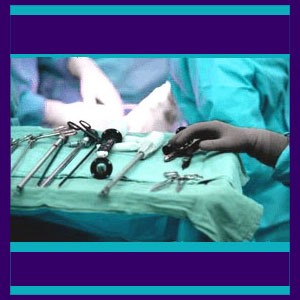
Piriformis surgery can be used to correct injury, resolve abnormal laxity/tension and eliminate compression of the sciatic and/or pudendal nerves. Surgical treatment for piriformis disorders is fortunately rather uncommon, sparing these patients the horrors of surgery faced by many other patients with spinal diagnoses. However, there continues to be both a demand for and an increase in supply of surgical services directed at various piriformis-related conditions, such as piriformis syndrome.
The piriformis muscle never received much attention in medical history until just a few decades ago, although lineage of the diagnosis of piriformis pathology dates back to at least the early twentieth century. For a time, it seemed that many diagnoses implicating the piriformis were falling out of favor, but this has changed once again, with more piriformis disorders being diagnosed now than ever before, particularly in the rapidly expanding complementary care sector.
This essay details various surgical approaches for piriformis pain syndromes. We will examine surgical intervention for piriformis injury, laxity/tension and neurological compression conditions. If you have unresponsive piriformis pain and are considering a more invasive approach to care, then this article is made specifically for your research needs.
Piriformis Surgery for Injury
Most piriformis injuries will heal organically and fully resolve. However, some injuries might cause persistent functional issues or might involve detachment of the muscle from one of its attaching tendons or detachment of the tendon from its attaching skeletal bonds.
Piriformis muscle detachment can create severe functional problems in the lateral rotator group and often requires surgical intervention to correct. In these procedures, the techniques used are generally minimally invasive and highly effective. However, the patient will usually require extensive physical therapy and recuperation time in order to achieve full use of the affected hip and leg once again.
Some patients might suffer a relapse of detachment following surgical fixation. More invasive surgery is used in rare instances of recurrent piriformis detachment. In these instances, the bonds will be reinforced with additional anatomical or synthetic support measures to ensure that the muscle will not rip free again.
Piriformis Surgery for Laxity or Tension
Hyperlaxity or hypertensioning of the piriformis muscle are usually deemed causative for piriformis syndrome, but in some cases, might create functional mechanical issues or pain in the muscle itself. Muscle imbalances are one possible consequence of both hyperlaxity and excessive piriformis tension.
In virtually all cases, tension and laxity issues are successfully treated conservatively in affected patients. Typically, piriformis exercise, stretches, physical therapy, heat and ice, manipulation and other forms of noninvasive care will bring about resolution of imbalances and local pain due to abnormal tension or laxity in the muscle. In very, very rare cases, the muscle will be treated surgically to correct these issues when more conservative approaches to care fail to deliver adequate outcomes. Procedures targeting laxity or tension are simple, minimally invasive and often very effectual in their curative outcomes.
Piriformis Muscle Surgery for Nerve Compression
Piriformis syndrome diagnoses are the most often treated using surgical care. Many patients are not responsive to more traditional nonsurgical care practices and continue to experience severe and functionally-limiting symptomology despite proactive treatment efforts. In these cases, the patient might be indicated for surgical therapy.
Surgery can be used in cases of typical anatomy to free the affected nerve (sciatic and/or pudendal) from any constricting or compressive contact with the piriformis muscle. However, most surgical cases involve patients who demonstrate atypical anatomical relationships between the piriformis muscle and the sciatic nerve. Often, this involves the sciatic nerve travelling through the substance of the piriformis muscle, although other variations, such as the sciatic nerve dividing around the muscle or being located anteriorly to the muscle, are also possible.
If the sciatic nerve can be effectively isolated from the muscle, the patient should experience total relief as long as the diagnosis is sound and correct. In cases where surgery succeeds structurally, but symptomology continues, the diagnostic verdict is usually flawed, explaining why all therapies, including surgery, have failed miserably in their relief efforts.




